A Darker Shade of Magic: The Clashing Philosophies of Red and White London
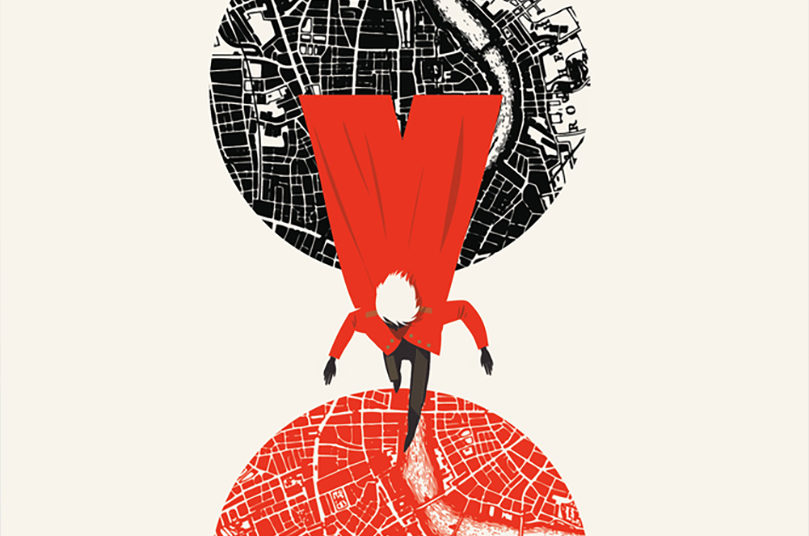
V.E. Schwab is one of the most distinct voices in fiction today. The American author has tackled a variety of genres including horror, science fiction, and super hero narratives, breathing new life and ideas into storied genres. A prolific writer, Schwab has published more than ten books over the past decade, developing a passionate following from her fans and admirers.
One quality that distinguishes Schwab is her versatility as a story teller. Writing books for a variety of different readers and age groups, Schwab has constructed stories with a diverse cast of characters and fully realized worlds. In her debut novel The Near Witch, Schwab explored themes of paranoia, fear, and the ways these forces affect communities. In the ongoing “Villains” trilogy (2013’s Viscous and 2018’s Vengeful), Schwab turned the burgeoning super hero genre on its head by creating a narrative focused on the effects of power, violence, and trauma on the human psyche.
 Both The Near Witch and Viscous illustrate Schwab’s ability to create nuanced characters and worlds, skills that are essential to the success of Schwab’s most prolific work: The Shades of Magic Trilogy. Starting with A Darker Shade of Magic, the author constructed a complex, nuanced group of interwoven worlds that offered a refreshing take on the fantasy genre. In the first novel of trilogy, Schwab explored the philosophies of Red and White London, two worlds with vastly different beliefs about society, government, and magic.
Both The Near Witch and Viscous illustrate Schwab’s ability to create nuanced characters and worlds, skills that are essential to the success of Schwab’s most prolific work: The Shades of Magic Trilogy. Starting with A Darker Shade of Magic, the author constructed a complex, nuanced group of interwoven worlds that offered a refreshing take on the fantasy genre. In the first novel of trilogy, Schwab explored the philosophies of Red and White London, two worlds with vastly different beliefs about society, government, and magic.
Red London views magic as a powerful, but sometimes dangerous resource. Many of Red London’s elders and leaders teach that magic needs to be treated as an equal; the forces of magic are to be guided or channeled rather than forced into servitude. In contrast, White London views magic as a force to be dominated. In White London, a spell caster bends magic to their will, forcing it to serve their purposes. The philosophies of Red and White London will come to a head in the conflict between protagonist Kell and his foil Holland, powerful magicians who sit at the crossroads of both philosophies.
The Symmetry and History of the Four Londons
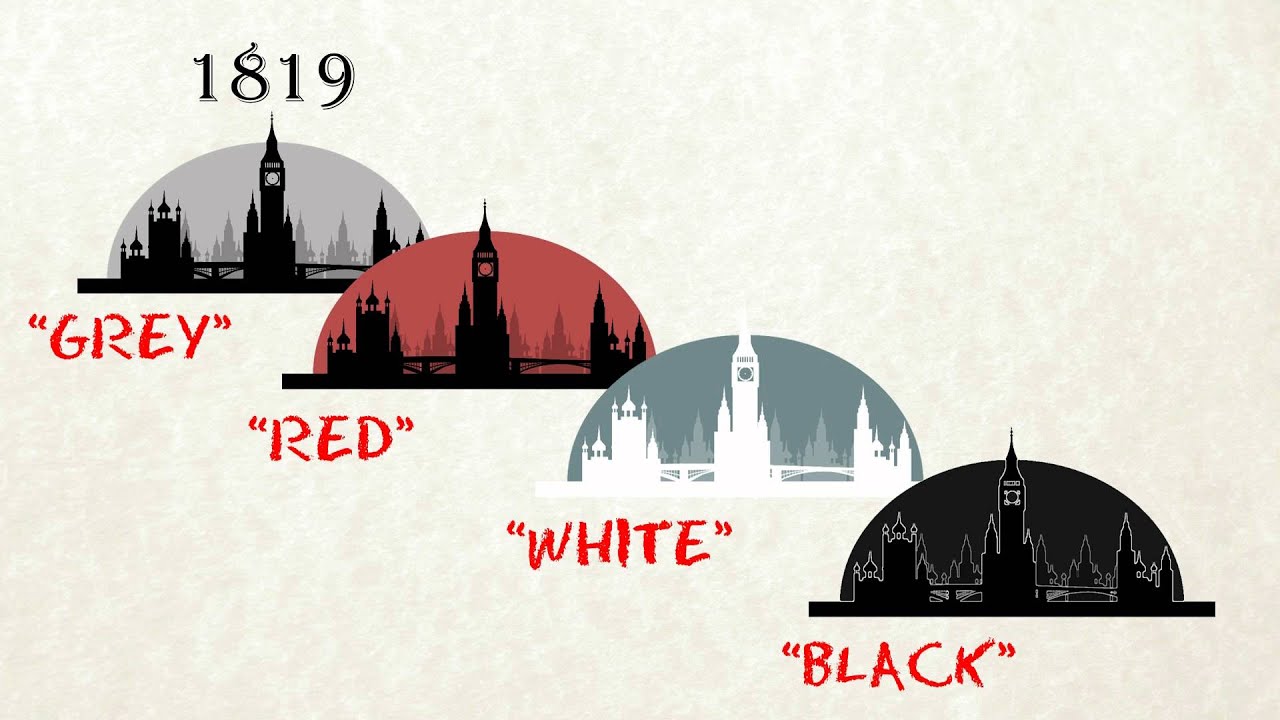
The universe of A Darker Shades of Magic is divided into four interwoven worlds. Each world contains a city in roughly the same location across the different worlds which protagonist Kell Maresh calls “London” in order to differentiate and explain the relationship between the worlds. While a version of London exists in each of four worlds, the four worlds are vastly different with different styles of architecture, different affinities for magic, and different government and social structures. The worlds were more closely connected with “gates” allowing individuals to move between worlds, until about three years before Kell’s lifetime, when the flourishing Red London closed the gates to protect their interests and safety. Only Antari, rare and powerful magicians identified by their single black iris, can create temporary pathways between the different Londons. An Antari can create a pathways using a blood spell along with a token from the world they wish to visit. Antari must travel from one world to another world that borders their current location. For example, an Antari in White London would need to pass through Red London before making their way to Grey London and vice versa.
While this set up may sound complicated, Schwab’s meticulous world building and story design allows the different locations to become distinct and familiar to the reader. Grey London is our 1800s London, given its name due to the scarcity of magic within the world. Red London is a flourishing city, the seat of the Arnesian nation. In Red London, Magic is commonplace with a set of laws and punishments to regulate and control magic users. Kell describes the waters of Red London river, known as the Isle, as a “jewel, lit from within, a ribbon of constant light unraveling through Red London” (44). The Isle and Red London are lands that flourish with magic and power which has caused the world to thrive since the closure of the gates. While magic is plentiful in Red London, there are individuals who have weak connections to magic, such as Prince Rhys Maresh (protagonist Kell’s surrogate brother), whose lack of magic is seen as an embarrassment for the Arnesian Royal Family. Kell, one of the only Antari of Red London, is the adopted son of King and Queen of Arnes, and the adopted prince serves as an envoy to the other Londons.
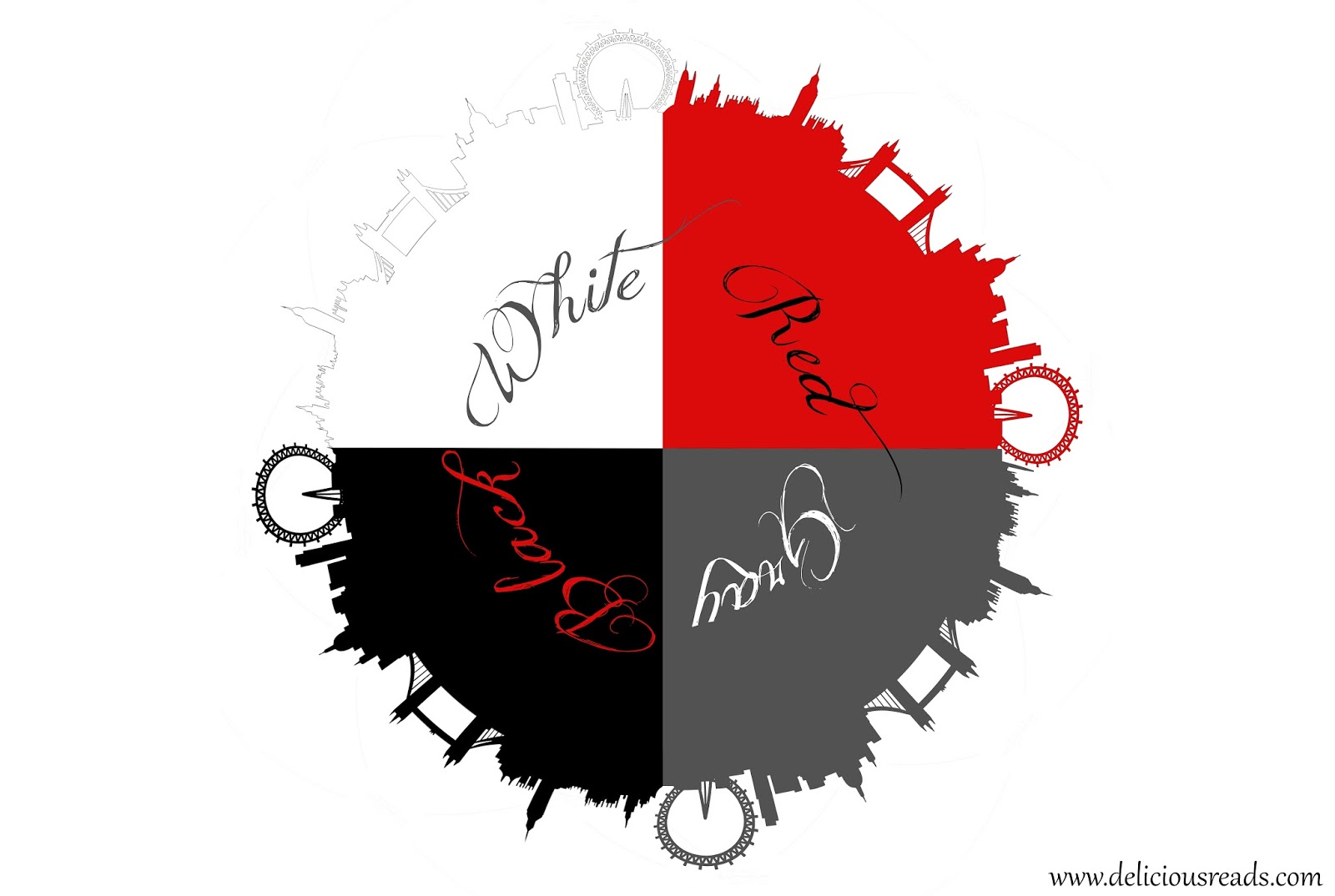
While magic is flourishing in Red London, magic in White London is crumbling. The decline of White London is tied to its immediate proximity to Black London. White London, where magic is more powerful than in Red London, was left to fend for itself against the out-of-control magic of Black London. While White London was able to keep the forces of Black London at bay, the cost was a drastic decline in that once-flourishing world. At the time of A Darker Shade of Magic, Kell describes White London as a wilting world where magic is in a state of decline, slowly receding from the world. Kell explains that the remaining magic of White London is “bitter…and it [magic] bleeds the world’s life and warmth… leaving only the pale and bloated corpse behind” (87). White London’s citizens are obsessed with controlling magic, often using tattoos, carvings on their skins, and brands to bind magic, and holding on to “what little power they had” (88). Socially, White London is in a constant state of flux, with a new ruler rising up and ruthlessly slaughtering the previous tyrant. In A Darker Shade of Magic, White London is ruled by the ruthless Astrid and Athos Dane, a cruel set of twin monarchs who specialize in magic used to dominate and control the body and will of others. Using this magic, the Dane Twins have enslaved White London’s Antari Holland. Astrid and Athos take pleasure in torturing and toying with Holland, who is bound by a magical soul seal, even forcing the powerful Antari to commit self harm for their own amusement. In White London, a person is either a master or a slave, with control and power as the most prized qualities in the dying world.
The last London is known as Black London. By Kell’s lifetime, Black London has achieved a myth-like-status, with most people knowing little about the place other than its downfall. According to Kell, Black London was the most powerful of all the worlds; it was a world with a “wealth of magic in its veins” (23). Hundreds of years ago, the inhabitants of Black London began to be consumed by their magic. The people allowed magic into their bodies and minds, not bothering to tame, balance, or properly control the torrential magical forces within their world. For Kell and other Red Londoners, Black London is a warning that when not properly controlled or balanced, magic will lead to disaster. While training with his brother, Kell reminds Rhys that the intemperance of Black London allowed rampant and dangerous magic to feed “on them [Black London] until it ate their bodies, and their minds, and then their souls” (24). The magic of Black London took the people as its hosts, like a parasite or infectious disease, consuming Black London and threatening to boil over into the other worlds. The dangers of this out-of-control magic led Red London to seal the gates between worlds, which left White London to beat back the magic that “spread like a plague (190). The leaders of Red London greatly feared the corrupting magic and influence of Black London, which resulted in Red London purging all known information and artifacts from Black London. The purges reduce Black London to a cautionary tale of a world that was consumed by magic and its own folly.
Red London – Balancing and Cultivating Magic In A Flourishing World
Kell, the protagonist of A Darker Shade of Magic, is raised by Red London’s King Maxim and Queen Emira Maresh as a surrogate son. Then young Antari has a complex relationship with the royal family, sometimes feeling like more of a “possession than a prince” (52). Regardless of how Kell feels about his adoptive family, the Antari has been irrevocably influenced by his upbringing in Red London and the training he received from Tieren Serense, a powerful magic wielder and advisor to the royal family. The influences of these different forces and groups have informed Kell’s ideas about magic and how to harness and use magic. For Kell and other Red Londoners, magic is a force to be cultivate, managed, and respected.
In his years of training, Kell has learned that magic needs to be respected as a powerful force. Kell asserts that magic must be treated “as equal, or even better, as supplicant” (78). For Kell, there is a delicate balancing act of guiding magic to serve your purposes and not letting that magic consume or overwhelm you. In common with powerful resources such as water, electricity, and gasoline, magic has the power to accomplish great things, but also has the ability to cause great destruction if not used correctly. An adept from Red London views magic as a living force, one that must be respected.
Balance is another key aspect within the philosophies of Red London. A crucial lesson learned from Black London is that too much magic or too powerful magic is corrupting and corrosive. Red London has instilled the importance of balance from an early age, with the almost scripture like credo: “Power in balance. Balance in power” (86). Magic is a force of nature, like water or fire, which can be dangerous when out of balance with the world and users around it. Magic needs to be wielded with “reverence as well as caution” (86). Kell and the denizens of Red London have constructed a flourishing world by carefully considering, monitoring, and regulating their use of magic.
White London – A Ravaged World Ruled Through Violence and Coercion
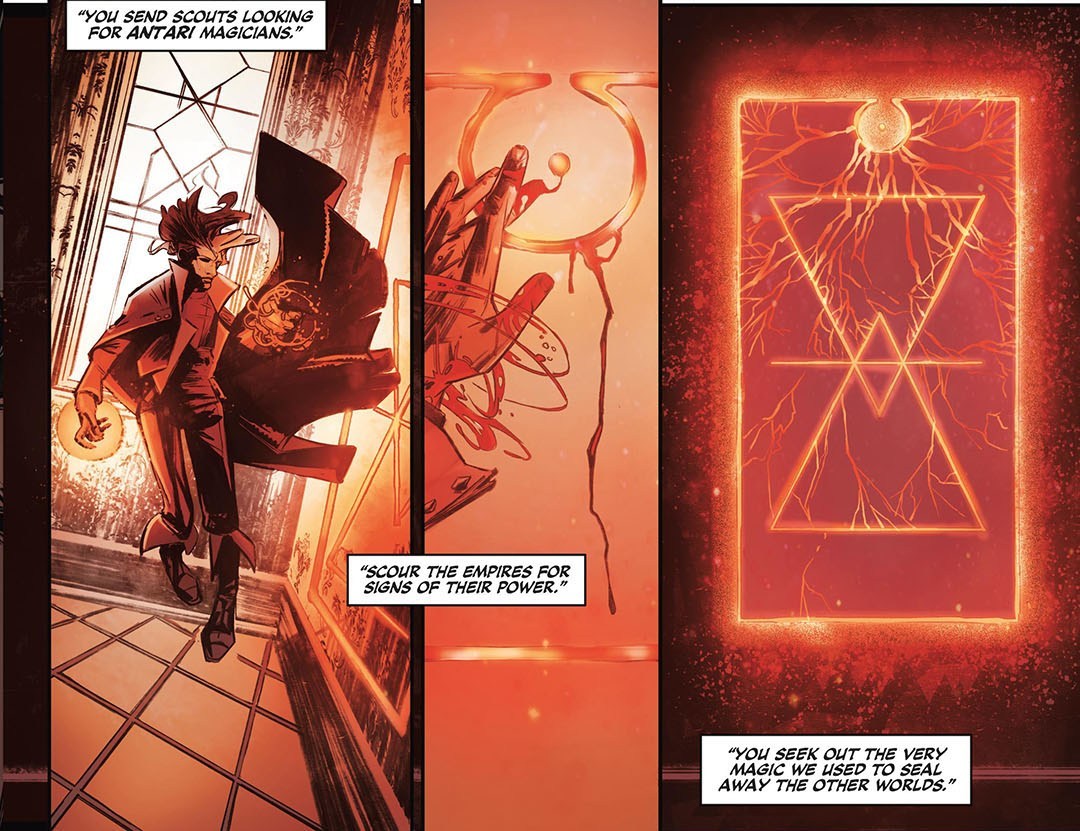
While Red London safely distanced itself from Black London, White London was left to battle the all consuming, corrosive magic of Black London. The battle against Black London left White London transformed, changing from a thriving, vibrant world into a world sapped of its vigor. Not only was White London’s landscape changed, the battle with Black London also irrevocably changed the philosophy of White London. After battling the viscous, sentient magic of Black London, magicians of the White London saw magic as a force that would wreck havoc if left uncontrolled. As such, White London saw magic as a force that needed to be controlled and subjugated.
Visually, Schwab goes to great lengths to differentiate the derelict White London from the flourishing Red London. While Red London is described as a “jewel”, White London is described as a world permanently stained “dark with blood” (88). Red London’s river is naturally red, a sign of its power, while White London’s blood stains are symbols of a world that is in the process of dying. White London exists as a twilight world, coated in an eternal layer of “snow-or ash” like a world in a post nuclear environment.
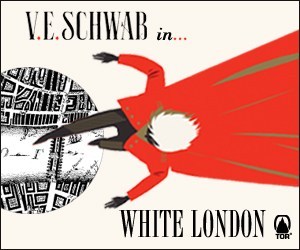
White London’s natural decline is intertwined with their social and governmental collapse. The once thriving world has descended into a survival of the fittest wasteland, where violence, torture, and coercion are regularly used to capture and maintain power. In A Darker Shade of Magic, Astrid and Athos Dane are the latest manifestation of the decline of White London. Known for their cunning, the rulers savor their ruthless victories by displaying bodies and bones to “commemorate those they have killed” (89).
Holland, White London’s powerful but enslaved Antari, acts as a foil for Kell. After years of struggling to survive in a viscous world, Holland has internalized many of White London’s grim philosophies. Holland, who lives as a slave, asserts that a magician is either magic’s master or “its slave” (172). While Red London learned to cultivate and balance magic, Holland and the other denizens of White London learned that magic must be controlled by any means necessary. The older Holland views Kell, who has relied on his ability to balance magic rather than totally control it, as some who has “never had to be strong” (337). The upbringing and life experiences of Holland have created fundamental differences between the two Antari that also serve to perfectly symbolize the differences between White and Red London.
Black London and The Antari – Magic At Its Most Potent and Dangerous
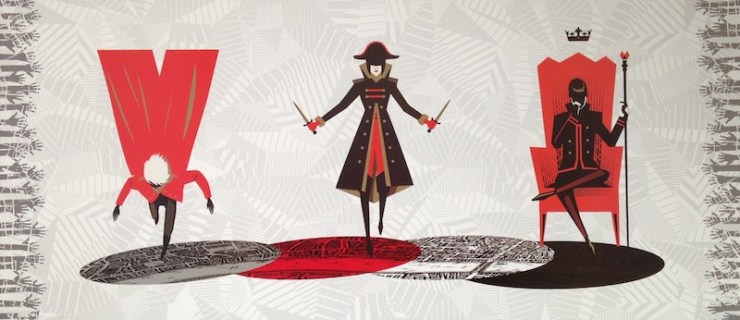
While the magic wielders of Red and White London each hold different philosophies over how to use and treat the forces of magic, the Antari of all worlds sit at the intersection of the different philosophies of Red, White, and Black London. The Antari’s abilities allow them to tap into magical forces in a way that separates them from their peers and gives them incredible power.
In A Darker Shade of Magic, the color black has crucial symbolic importance, representing power in its purest forms. The term “Black London” is simply a reference to the fourth world’s collapse, but also a testament to how deeply powerful the magic and magicians of Black London were. The world is described by Kell as the place of untamed power where every man, women, and child spoke the “language of magic” (121). The ability to communicate so directly and so intimately with magic fueled Black London’s incredible power. Black Londoners grew more and more powerful as they accepted magic without “walls, without rules, without anything but want or will” (126). The downfall of Black London was fueled by their immense power and lack of temperance, a fear so potent that Red London found it necessary to “forcibly erase” or “ward against” the power that consumed their neighbor (121).
Schwab’s use of the color black to symbolize of power is also present in the Antari, the magic users that include Kell and Holland (along with key character Lila Bard). Each Antari is born with an eye with a natural colored iris and one eye with a pure black iris. Though the Antari are rare, this black eye is a symbol of the raw and unique power of the Antari. In Red London, Kell is identified by his eye as “the black eyed prince” and treated with equal amounts of respect and fear. The black eye marks Kell and Holland as different, a liability in the power hungry world of White London. Regardless of the world, the black eye mark the Antari as “the other” capable of creating and reshaping the world around them.
Throughout the narrative, Kell links his single black eye to the blood that flows in his veins. Kell views his single black eye as the “mark of magic” which is deeply connected to the Antari’s control over blood magic (58). In A Darker Shade of Magic, blood is a tool used by Antari to accomplish their most powerful magic, something that is exclusive to Antari. While talented adepts can manipulate fire, earth, water, air, or bone, only the Antari command blood, which has a “will of its own” separate from the other elements (79). The Antari use their blood magic to command “the world around them”, making the Antari the most powerful and potent magicians across all the worlds (57). The single black of the Antari represent their unique powers and commands over blood, a constant symbol of the power that Antari possess.
Conclusion – A Clash of Philosophies That Sets The Stage For A Darker Shade of Magic‘s Sequels
V.E. Schwab’s A Darker Shade of Magic stands as a complex examination the different ways of viewing and controlling magic and power. While Red London believes that magic needs to be used with caution and balance, White London believes that a magic user must treat magic as its slave and subjugate the force. The different philosophies are embodied by protagonist Kell and antagonist Holland, whose battles are a central plot point of the novel. Without Kell and Holland to embody and symbolize their respective worlds, the novel would struggle to establish fully realized world for its characters to inhabit.
As Kell and Holland come into contact with a powerful artifact from Black London, a stone known as Vitari, the clashing philosophies will be tested in ways that Kell, Holland, and the Danes could not possibly predict. In a battle with and against the powers of Black London, the reader and characters will be asked to question which philosophies will better serve the magic wielders in Red and White London? Will the temperance of Red London help Kell control and balance the dangerous powers of the stone, or will the philosophies of White London help Holland and the Danes control the previously untamed powers of Black London? The answers to this question will help define A Darker Shade of Magic‘s two sequels and fundamentally shifting the balance of power within the four Londons.
The philosophies of Red, White, and Black London are further explored in A Gathering of Shadows and A Conjuring of Light. In these books, Schwab complicates the relationships between the different worlds, along with the relationship between Kell and Holland, a choice that adds nuance to the worlds that Schwab’s pioneered in the trailblazing first third of her trilogy. With the announcement of a sequel trilogy set after the events of the first three books, it will be exciting to see how Schwab iterates and expands on the incredible vision she has already established.
What do you think? Leave a comment.
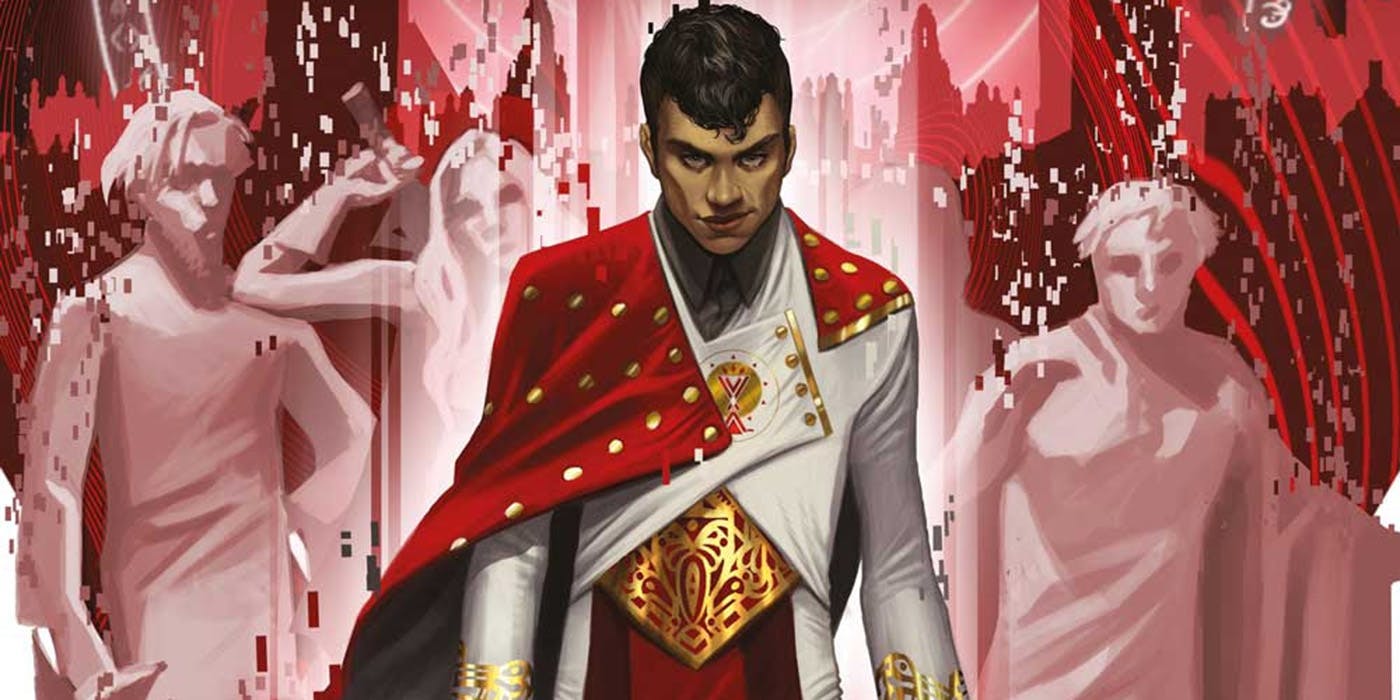











JUST finished reading the first book. These characters are my new children and I can’t wait to get my hands on book two!
As neat as Red London is, I felt like the worlds were pretty underdeveloped. We had some sketches about the culture of the various Londons (and there is always a London), but not much of the meat of the cultures.
Grey London is just early 18th century London, Black London is completely off limits, jaunts into White London were very short or didn’t show much of the way its wretched citizens lived, and Red London, in my estimation, did little to separate itself from any other high fantasy city.
There was even less attention paid to the world outside of the Londons.
It is basically a YA novel disguised as a Adult fantasy.
I have a thing going on in my head where A Darker Shade of Magic and The Night Circus occur in the same universe and that’s fun to think about.
Those two books would make a fascinating shared world/universe!
i love the whole concept, the writing and just— everything
I really wanted to like this book but i just wanted lila to die. She is a horrible character, like seriously, Kell’s interactions with her are so eyeroll worthy.
Love how it turned out! You’ve convinced me to give this series a chance. I’ll bump it to the top of my reading list now. It’s so difficult to find well-written, thematically-compelling fantasy that isn’t shoehorned into YA.
I loved the idea that there would be fixed points (like that one tavern) which would appear in all the Londons at the exact same place.
I am a Victorian Schwab fangirl after 3 books…but I really hope she puts people that aren’t white and straight in her books….cuz I’m feelin’ the guilt reading her.
I suggest reading the two sequels to A Darker Shade of Magic, called “A Gathering Of Shadows” and “A Conjuring of Light”. Both books include the most diverse cast of characters.
I read this book a couple of weeks ago and, despite the fact that I did like it, I honestly think it isn’t as flawless as “the hype” wants it to be.
Yes, the writing is cool, and the worldbuilding too, but the only interesting character in this book is Kell. Lila gets a bit of deepness in the second book, but honestly, in the first one it’s like she’s there just to have somebody who doesn’t know magic and stuff in the play. As for other characters, they’re not really depicted at all, so I can’t see how you felt them being real, but ok 🙂
Actually my only real critique with this book is more of a question. In which way is this book not a YA?
Not sure either why this is adult instead of YA….there doesn’t seem to anything very graphic or more violent then the Harry Potter books (and those are considered middle grade if I’m not mistaken). Maybe the publisher’s wanted to be safe, but from what I’m not really sure.
This is one of my favorite series ❤️
I loved the magic in this novel, and the idea of multiple Londons, but I wasn’t impressed with either the pirate obsession or Lila in general, which I think sides me with the minority.
I loved this book and it did live up to the hype for me. Great analysis!
Awh, my reaction was the opposite! I heard so many great things about the book but ultimately I was super disappointed – we hardly learn anything about the characters, the plot moved incredibly slowly (at least for my taste) and the writing seemed really lack-lustre and average. I felt like during the first half of the book, she explained the differences of the four Londons at least 3-4 times and it felt so redundant. I found Lila wholly unlikable and if I hadn’t been told that it was set in the Regency period I wouldn’t have guessed that at all. I really wanted the book to be more satisfying than it was. I wish I had your experience with it!
Finally someone who has a similar opinion on the book!
I feel like nothing happens in the book and i don’t understand how readers can have certain feelings about the characters bc i still literally don’t know nothing about them. I got concerned bc i only found positive articles so i was kinda relieved when i read your comment.
I don’t have time to physically read the book so I chose to audio book it. I am really liking the story and the characters the whole world in this book. I’m just not liking Lila’s character. She’s really getting on my nerves and is making it hard for me to enjoy this book. Maybe is just and the narrator’s choice of voice for this character. Part of me just wants to have the story without her character in it. Is it just me? I wonder if I should just stop and wait until I have time to physically read the book. Maybe I like her character better with my own voice then with the narrator’s voice.
Should I read this trilogy first or the Six of Crows duology?
Six of Crows, for sure. While this has a fantastic premise, I feel like there was this weird detachment from the characters, especially Lila. Generally, I start liking the characters pretty soon, but something about the way they are portrayed is a little shallow. Six of Crows is a better start, in my opinion. Give this a shot after that (really hoping the next to books will be fantastic cuz I’ve also just read the first one.)
Six of Crows, for sure. While this has a fantastic premise, I feel like there was this weird detachment from the characters, especially Lila. Generally, I start liking the characters pretty soon, but something about the way they are portrayed is a little shallow. Six of Crows is a better start, in my opinion. Give this a shot after that (really hoping the next to books will be fantastic cuz I’ve also just read the first one.)
I have some mixed feelings about it. The setting was so promising and intriguing, and yet, something felt amiss. There was too much of action to my liking and too little of character development. Kell seemed an average good boy, Delilah was typical too: so strong, yet so fragile. I wanted to so much to lean more about Kell, and Rhy, and Holland. But all they did was running and fighting. This type of narration doesn’t leave to much space for a more vivid portrayal of the characters, so… I still wander if there’s more to them than just playing the “mage” and “thief” roles.
I think the thing about Victoria’s writing is kind of the way that vanilla ice cream exists in a sundae–it’s simple if only to draw attention away from the language and toward the plot which I found absolutely refreshing as I usually tend to enjoy stuff that’s on the more Valente-esque side of things too. Loved this entire series!
I bought the box set bc I started a project of good male protagonist in YA (mostly but it blossoms to any genre) and I was recommended this series by the same person who recommended me to other books like ‘Lock In’ and ‘The Gentleman’s Guide to Vice and Virtue’ and The Summoner trilogy and bc she gave me a lot of recommendation, I was like “why not?”
I started this book about 3 weeks ago and it was one of the reasons why I didn’t liked this book at the beginning bc of it’s slow pace and plus I don’t have the time to read books like I use to bc I work and I’ll buy an audiobook. Now that i gave it more chance to develop, I actually love the book (as much as I read) and I kinda live the format of how it is and I love the rules, the characters that they were developing for the plot and it was just a book that I don’t mind reading it again if I wanted to bc I’m someone who’s into action adventure , mystery, thriller/suspense with sci-fi or fantasy…fast pace kind of books, and once it started, I got completely hooked on the book and so yea…ready for book 2!
This is one of my favourite series ever! I love the worldbuilding, Red London is described so well that I feel like I’ve been there. It’s just so magical. When I first read it, I was in the process moving out of my god-awful hometown and I think that really helped me connect to the story and to Lila. I can’t wait to eat up the rest of V.E. Schwab’s work.
V. E. Schwab gives me feelings.
I bought Vicious recently and am excited to start something by VE Schwab, I have heard good things about her writing.
Viscious is an incredibly interesting book. It was the first V. E. Schwab book I ever read. I hope you enjoy it!
I loved the entire world building, the characters, the relationships, everything. My first word to describe this series would be magical.
During some scenes, particularly at the end of the book, I felt like Schwab took the ‘easy’ way out. I wanted more conflict at the end; I wanted there to be more struggle. For example, Kell knowing that it wasn’t Lila without explaining to us why (I don’t necessarily think he didn’t think it was her because she said ‘please’, felt like an easy way to solve that conflict.
This is very interesting. I hadn’t heard of this series before but from the way it’s described here, I’m thinking I might check it out at some point. It looks like it has an interesting take on magic.
The series seems sound in its ideas—strong thematic roots are key to see,in anything, especially in literature. You’ve attracted my interest, Sean. Great work!
I’m basically just amazed at Victoria Schwab’s brain- that she was able to create this incredible world and this story, so wonderfully written.
I picked this book up from the library today, i am about a third through so far and i love it!
This book was extraordinary! The world was so original and creative…
I just finished this trilogy and I absolutely loved it. I’m currently working on my review for this and will reference your analysis. I have so much to say!
I think it is an excellent trilogy. Though the Danes are more interesting villains than Osaron. But overall I love the series and its diverse cast of characters.
Is there no way to bookmark articles on this site?
This is a fantastic, thorough, and well-written article! Your hard work really paid off, and it’s wonderful to see such a good series represented here. I’m partway through the first book, and it is amazing. Thank you for sharing this with us!
Thank you! I am glad you enjoy the book!
Um, Schwab’s first book in the Villians series is called “Vicious”, not Viscous, also missing “the” before trilogy in the last line of the third paragraph.
I really enjoyed reading this series, but thought the article could delve a little deeper into the somewhat allegorical aspect of magic as metaphor for power and power structures. Its a great start to the idea, but dances around the point a little for my taste.
I loved the book series when I last read it, but to be honest I didn’t feel so compelled by the world-building. I felt like they acted as plot devices more than worlds, as tools to be used by the narrative rather than encompassing the whole feel of the story.
Interesting analysis, I need to give the books another read to see what you mean.
An interesting essay. I’m not much into reading this particular type of literature but I have a daughter who is–I’ll recommend it to her. Thanks for a well-written essay.
This seems to be allegorical in someways to the Hero’s Journey.